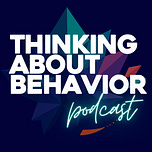What do we really mean when we say something is a social norm? And why do some norms hold on—even when nobody seems to like them?
This episode explores the architecture of social norms through the work of Cristina Bicchieri, drawing on notes from Norms in the Wild and The Grammar of Society. It covers what distinguishes norms from customs, conventions, laws, and moral rules - and why that distinction matters for anyone working in behavioural science, public policy, or cultural change.
The episode covers:
How empirical and normative expectations work together
What it means to have a conditional preference for conformity
How scripts activate norms in context
Why unpopular norms persist (hint: it’s not always about belief)
What it actually takes to shift social norms—not just in theory, but in practice
The episode is based on briefing notes synthesised from Bicchieri’s writing and aims to support practitioners who want a more structured view of norm dynamics. As with all episodes, it was generated using NotebookLM and curated by Elina Halonen.
Quick Glossary
Empirical expectations: What I believe others will do
Normative expectations: What I believe others think I should do
Conditional preference: I’ll conform if I believe others are conforming—and expect me to
Reference network: The people whose opinions and behaviours shape my expectations
Pluralistic ignorance: When we wrongly assume others support a norm, and stay silent
Scripts: Mental templates that guide behaviour in familiar situations—often unconsciously
Note on terminology: In Norms in the Wild, Bicchieri clarifies that what she defines as social norms corresponds to what Cialdini et al. (1990) refer to as injunctive norms—that is, rules based on perceived social approval or disapproval. Although the terminology differs, the underlying concept is the same.









